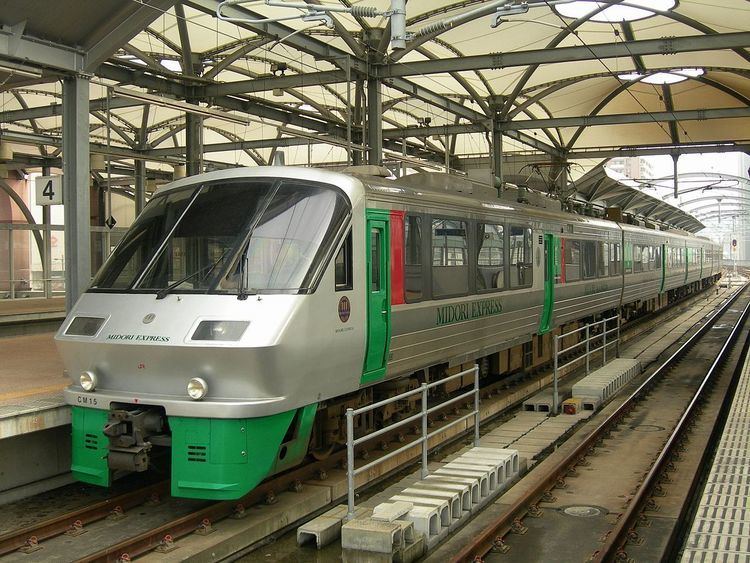First service 1961 Former operator(s) JNR | ||
 | ||
The Midori (みどり, lit. "Green") is a limited express train service which runs between Hakata and Sasebo in Kyushu, Japan, operated by the Kyushu Railway Company (JR Kyushu).
Contents
Service pattern
Midori services run between Hakata and Sasebo, often combined with Huis Ten Bosch services between Hakata and Haiki.
In the past, services were also combined with some Kamome services between Hakata and Hizen-Yamaguchi.
Rolling stock
Services are formed of 4-car 783 series electric multiple unit (EMU) sets with Green car (first class) accommodation.
Formations
Services are normally formed of 4- or 8-car 783 series EMU formations as shown below. All cars are no-smoking.
History
The Midori name was first used from 1 October 1961 on limited express services operating between Osaka and Hakata using 12-car KiHa 80 series diesel multiple unit (DMU) sets. Timings were as shown below.
From 1 October 1964, with the opening of the Tokaido Shinkansen, services operated between Shin-Osaka and Kumamoto and Oita. Although the route was now electrified, services continued to use KiHa 80 series DMU sets formed as 13 cars.
From 1 October 1965, the services operated between Shin-Osaka and Sasebo and Oita. From 1 October 1967, services were once again modified to run between Shin-Osaka and Oita, this time using new 581 series EMUs. The 581 series units were used for only a year on these services, however, replaced by 11-car 485 series EMU formations from October 1968.
With the opening of the Sanyō Shinkansen to Okayama in October 1973, Midori services were increased to two return workings daily, operating between Okayama and Oita. From April 1974, the Nippo Main Line to Minami-Miyazaki was electrified, and the Midori services were reorganized as shown below, with one working daily extended to and from Miyazaki.
These services were discontinued from March 1975 following the completion of the Sanyō Shinkansen to Hakata.
From 1 July 1976, following electrification of the route from Hakata to Nagasaki and Sasebo, the Midori name was revived for new services operating between Kokura, Hakata and Sasebo, using 4-car 485 series EMUs running as 12-car formations in conjunction with Kamome services between Kokura/Hakata and Hizen-Yamaguchi. Initially 6 return workings daily were operated, increased to 10 daily from October 1980, and further increased to 13 return workings daily from November 1982. From November 1986, the Midori services were rescheduled to operate separately from the Kamome services. Following privatization of Japanese National Railways (JNR), the 485 series EMUs used on Midori services were refurbished between 1990 and 1991, receiving all-over red liveries and "Midori Express" branding. By March 2000, all services were operated with 783 series EMUs.
